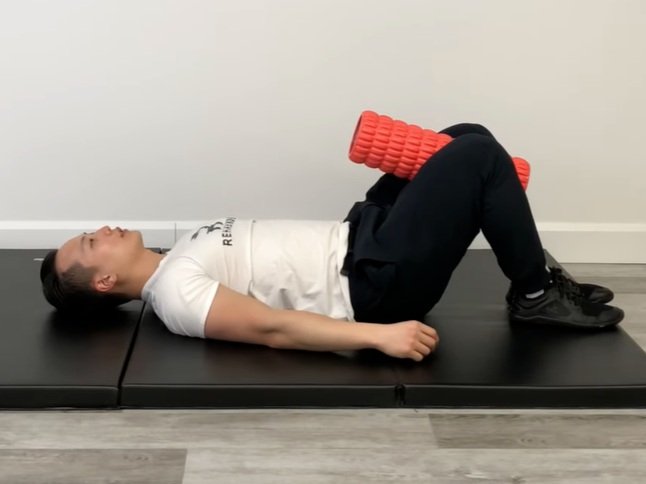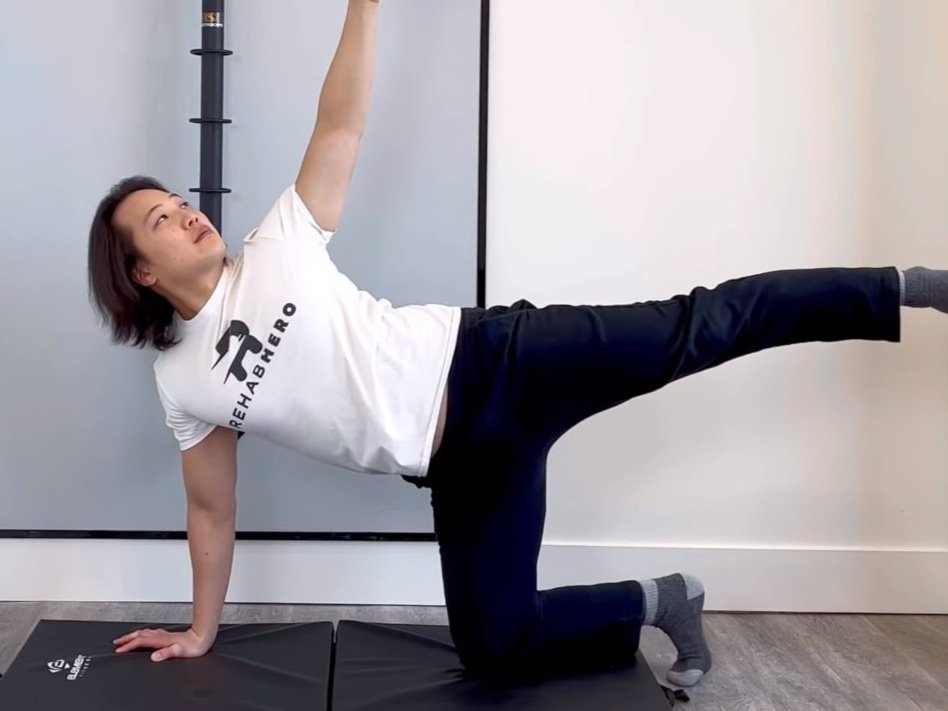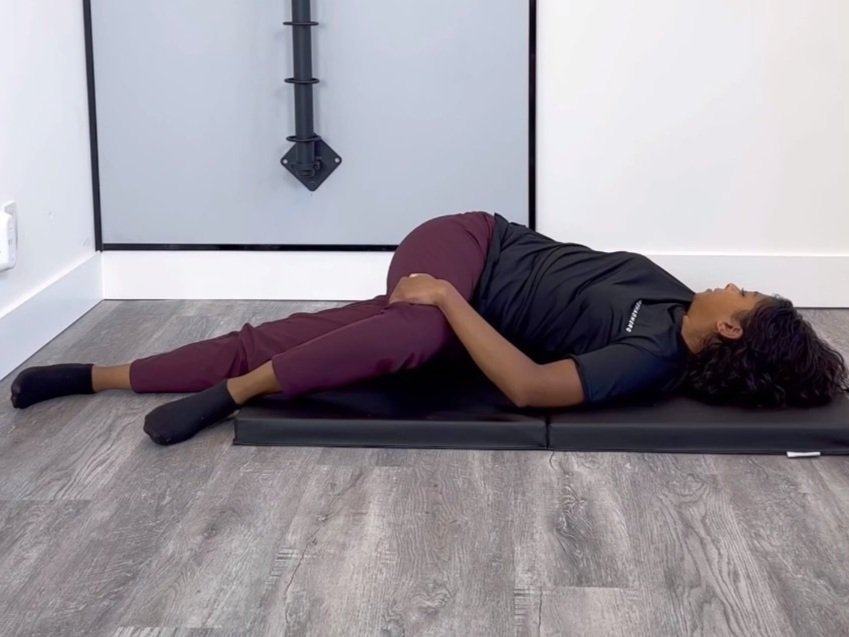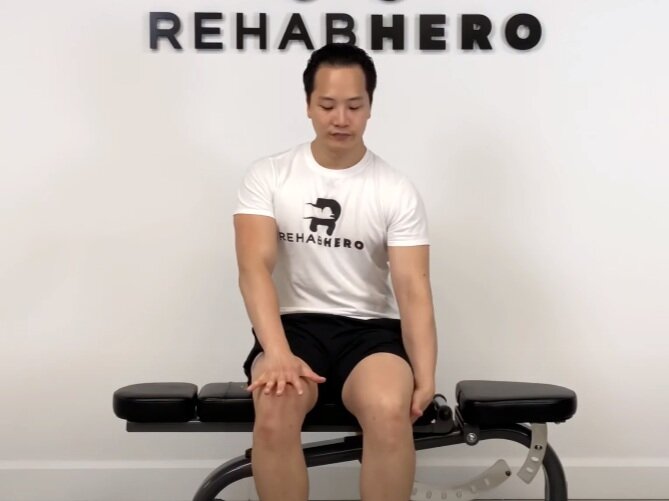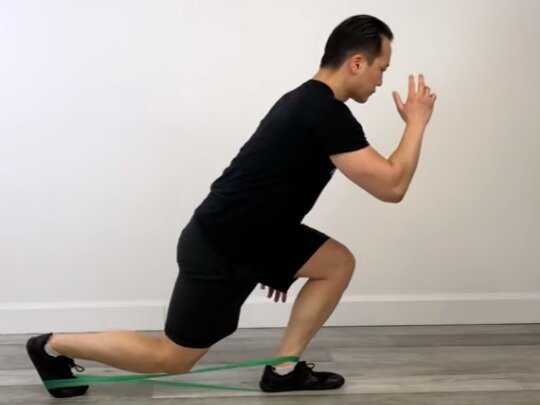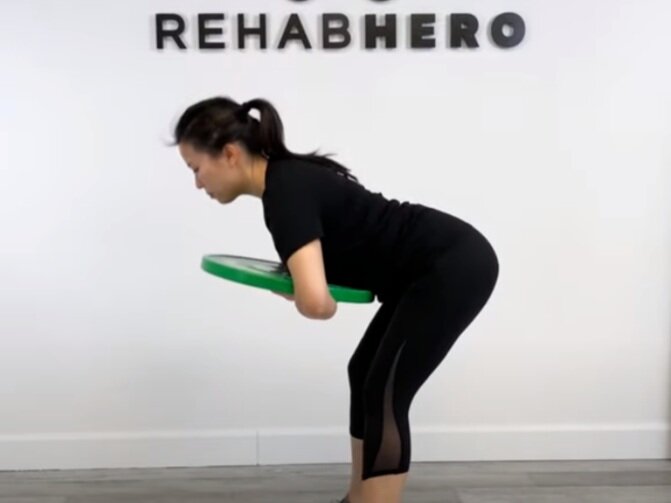What is sacroiliitis?
Your back pain & sacroiliitis
Learn about this pelvic condition and how to recover
Sacroiliitis is a painful condition that can be affecting your low back, pelvis and buttock region. It is a condition that is typically painful when doing movements like bending forwards, bending backwards, getting up from a seated position, or getting in or out of a car. Depending on the acute onset of this condition, it can prevent you from enjoying your day or interfere with your work and/or personal life. While the condition can be very painful in some cases, it is an injury that you can fully recover from. In this circumstance, the intensity of pain is not correlated with the severity of injury or damage to anatomical structures.
What causes pain in sacroiliitis?
Sacroiliitis is a condition that affects the sacroiliac joint. This joint is formed between your sacrum or tailbone and your ilium or pelvis. This joint is an area that requires a lot of stability in order to transfer movement from your spine to the lower body and vice-versa. As such, this joint is wrapped in many layers of strong and thick ligaments that minimize excessive movement. Recent studies show that this joint, unlike most of your other joints in your body, only moves between 3-5 degrees.
The sacroiliac joint is made of fibrocartilage and hyaline cartilage. To further expand on the dissimilarities that this joint has with other joints, this joint has two segments to it, an anterior segment which is considered to be a true synovial joint and a posterior segment. The posterior segment is a syndesmosis joint that is made up of muscles and ligaments. The muscles involved include the gluteus minimus, gluteus medius and the piriformis.
Since the sacroiliac joint or SIJ for short, has an intimate relationship with the aforementioned muscles, pain can also be generated by these hip abductor muscles. As such, sacroiliac joint pain can be generated from joint itself or the muscles surrounding it. The muscles can generate pain as they may be acutely strained, repetitively strained, or dysfunctional (leading to biomechanical issues). Sacroiliitis pain can be felt in the back, the pelvis, the hip and buttock, and down the thigh. The symptoms can mimic sciatica which is why this condition can be confused with a disc herniation and is also known as pseudo-sciatica. Since pain associated with sacroiliitis is not structural, full recovery is possible and the pain can go away.
Sacroiliitis treatment
Sacroiliitis is a condition that is classified as a musculoskeletal injury. Seeing a health care professional such as a chiropractor, physiotherapist, massage therapist or acupuncturist are excellent options when it comes to seeking treatment. These health care providers will be able to assess and treat your injury, as well as create a comprehensive treatment plan that will get you to full function.
Chiropractors treat sacroiliitis with spinal manipulation therapy, joint mobilizations and myofascial release. Spinal manipulation or ‘back adjustments’ and joint mobilizations are used to help with the circulation of synovial fluid (this is joint fluid) within the sacroiliac joint. Synovial fluid is a joint’s main source of nutrition, which when circulated will help to decrease inflammation and increase healing. These techniques are also used to help create a reflex response in the joint receptors which can decrease pain.
Physiotherapists will often use a combination of exercise rehabilitation, joint mobilizations and myofascial massage to help you to recover. Similar to a chiropractor the main goal of a physiotherapist is to get you to move with full function using exercises that is comfortable within your pain tolerance.
Massage therapists will use soft tissue technique like deep tissue, myofascial release, sports massage, and cupping. The main goal of these types of therapies is to improve local blood circulation of the gluteus minimus, gluteus medius and piriformis muscles (as these muscles form the back part of the SIJ). Massage techniques will also be used to create a reflex response to reduce muscle spasm and muscle guarding which will increase mobility and decrease pain.
Acupuncturists will use sterilized needles at specific points in your body to encourage your body’s natural ability to heal. Needles are placed in nervous system points to decrease pain, improve circulation, improve hormone release and improve recovery.
To learn more about how a Rehab Hero clinician can help you with your recovery goals click the button below.
Sacroiliitis exercises
Exercises for the sacroiliac joint are often focused on stabilization. This incorporates the use of isometric contractions of the hip adductors, hip abductors, hip flexors and hip extensors. By isometrically contracting these muscles together you can increase joint centration and decrease pain.
Before starting an exercise program it is ALWAYS recommended to first consult one of the aforementioned healthcare professionals FIRST. This is because many of the symptoms found in sacroiliitis can be caused by other conditions such as disc herniation or radiculopathy. In the event that a different diagnosis is causing you your symptoms, exercises recommended for sacroiliitis may make your condition feel worse. Self-diagnosis is strongly discouraged due to the potential risk of further injuring your condition. The following exercises are examples of how to unlock the sacroiliac joint by yourself:
Pelvic Setting: This is one of the best bang for your buck exercises. By using something like a broomstick, hockey stick, golf club, etc. you can get provide isometric resistance to one of your hip flexors and the opposite leg’s hip extensors at the same time. This will result in your core muscles becoming engaged which will contribute to the stabilization of the SIJ. While lying down on your back (preferably on a padded surface) start by placing the stick or dowel under one thigh and overtop the other. Hold the stick with both arms. Use your arms to stabilize the stick as you drive your thighs into the stick and hold this contraction for 5-7 seconds. Alternate sides and complete 6-10 repetitions once or twice a day as tolerated.
Adductor Squeeze: This exercise targets the muscles of the inner thigh, namely the adductor magnus, adductor longus, adductor brevis, gracilis and pectineus muscles. These muscles are known as the hip adductors and are sometimes referred to as the groin muscles. To start grab a foam roller, yoga block, or a rolled up towel. Lie down on your back in crook lie position with your knees bent to 80-90 degrees. Place the object between your knees and squeeze your knees together to compress it. Hold this maximal contraction for 5-7 seconds and repeat for 5-6 repetitions. Be sure to give yourself 5-7 seconds of rest between repetitions and complete this exercise once or twice daily as tolerated.
Supine Clamshell: This exercise uses a band to provide resistance to the hip external rotator and hip abductors. Namely we’ll be target the gluteus medius muscle (especially since this muscle forms part of the SIJ capsule). While lying down on your back loop any type of exercise band around your knees. Keep your knees bent to 80-90 degrees. Spread your knees outward as far as you can while allowing your feet to rotate off of the ground. Hold this contraction for 5-7 seconds before gently returning to a rested position. Rest for 5-7 seconds and complete up to 8 repetitions as needed.
The three exercises found in this blog post can be done during the acute stage or subacute stage of recovery. This means that they can be done from Day 1 to Day 10 of the initial onset of symptoms. During the acute stage of recovery (Day 1-4) only a low intensity of exercise may be tolerated, so stick to a pain-free contraction intensity and range of motion during this stage of healing. Following the subacute stage of healing (Days 10+) more difficult exercises will be needed to progress towards full function and health. These exercises are typically more specific to you as an individual as exercises prescribed will depend on your lifestyle. To receive a personalized exercise program it is recommended to visit your health care practitioner. To receive a program from a Rehab Hero therapist in Toronto or Markham you can book an appointment online using the button below.
You can watch our full video made by North York chiropractor Dr. David Song on sacroiliitis and how to recover from it below.
Sacroiliitis sleeping position
While there is no specific sleeping position that can completely relieve sacroiliitis, any position that supports the sacroiliac joint will be helpful. Generally speaking, positions that promote a soft bend in the knees can help to relieve symptoms when you are trying to sleep. If you are a back sleeper, place a pillow under your calves can help to elevate the knees and offload the sacroiliac joint. If you’re a side sleeper placing a pillow between the thighs and arms can likewise help to decrease pain felt in the SIJ. For stomach sleepers it may be recommended to adopt an oblique sleeping position.
Is walking good for sacroiliac joint pain?
If you can tolerate walking without too much pain it is generally recommended to walk once or twice daily. Remaining ambulatory will serve multiple purposes and will promote recovery. Since the SIJ is a joint with synovial fluid, and joint fluid circulation depends on joint movement, walking can provide a great stimulus to promote healing. Synovial fluid is the fluid in joints that provide it with the nutrients necessary for recovery, by improving circulation you can promote faster recovery. By maintaining activity levels you can also prevent deconditioning of your muscles and joint stabilizers. This will allow you to return to normal activity levels as it will prevent the atrophy and weakening of muscles that is associated with complete rest. Walking will also promote blood circulation to the muscles of the SIJ, which will also promote healing as these muscles form part of the joint.
Conclusion
Sacroiliitis pain can be debilitating. Although the pain intensity can be very high (even causing some to become bed ridden), the actual condition is not considered to be a severe injury as structural damage is rarely the cause of pain. This condition is managed well conservatively with therapy and exercise, and full recovery is possible in a 2 to 6 week timeframe with treatment. The natural history of this condition is 2 to 3 months, which is the length of time that is needed to recover without treatment. If you have any general questions feel free to leave a comment below.
Written by: Dr. David Song
Dr. Song is a content creator and chiropractor based in the city of Toronto, Ontario. With a passion in empowering patients, he focuses his time on educating the public on health, wellness and performance.



